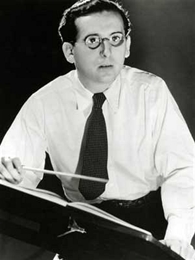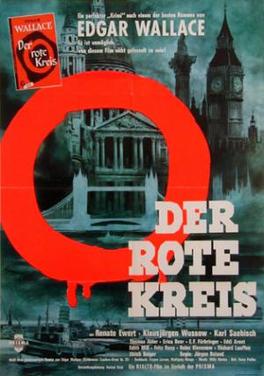This is a list of the most notable films produced in the Cinema of Germany in 1936.
This is a list of the most notable films produced in the Cinema of Germany in 1936.
| Title | Director | Cast | Genre | Notes |
|---|---|---|---|---|
| Der blaue Punkt | Wolfgang Kaskeline | animation | ||
| Bommerli | Richard Groschopp | animation | ||
| Eine kleine Königstragödie | Richard Groschopp | animation | ||
| En fargesymfoni i blått | animation | Co-production with Norway | ||
| Graf Habenichts | Kurt Stordel | animation | ||
| Puss in Boots | Lotte Reiniger | animation | ||
| Silhouetten | Lotte Reiniger, Walter Reisch | Animation | Animated feature film | |
| Das Schönheitsfleckchen | Carl Froelich, Rolf Hansen | The Beauty Mark in Opticolor | ||
| Tischlein deck dich | Ferdinand Diehl | animation | ||
| Vier Asse | George Pal | Animation | Four Aces | |
| Zum Greifen nah | Almost Close Enough to Touch, experimental 3-D film | |||

The 1930s was a decade that began on January 1, 1930, and ended on December 31, 1939. In the United States, the Dust Bowl led to the nickname the "Dirty Thirties".

The 1936 Summer Olympics, officially the Games of the XI Olympiad and officially branded as Berlin 1936, was an international multi-sport event held from 1 to 16 August 1936 in Berlin, Germany. Berlin won the bid to host the Games over Barcelona at the 29th IOC Session on 26 April 1931, two years before the Nazi Party rose to power in Germany. The 1936 Games marked the second and most recent time the International Olympic Committee gathered to vote in a city that was bidding to host those Games. Later rule modifications forbade cities hosting the bid vote from being awarded the games.

James Cleveland "Jesse" Owens was an American track and field athlete who won four gold medals at the 1936 Olympic Games.

LZ 129 Hindenburg was a German commercial passenger-carrying rigid airship, the lead ship of the Hindenburg class, the longest class of flying machine and the largest airship by envelope volume. It was designed and built by the Zeppelin Company on the shores of Lake Constance in Friedrichshafen, Germany, and was operated by the German Zeppelin Airline Company. It was named after Field Marshal Paul von Hindenburg, who was President of Germany from 1925 until his death in 1934.

Modern Times is a 1936 American part-talkie comedy film produced, written and directed by Charlie Chaplin. In Chaplin's last performance as the iconic Little Tramp, his character struggles to survive in the modern, industrialized world. The film also stars Paulette Goddard, Henry Bergman, Tiny Sandford and Chester Conklin.

Sir Alexander Korda was a Hungarian–born British film director, producer, and screenwriter, who founded his own film production studios and film distribution company.

The Nuremberg rallies were a series of celebratory events coordinated by the Nazi Party in Germany. The first Nazi Nuremberg rally took place in 1923. This rally was not particularly large and did not have much impact; however, as the party grew in size, the rallies became more elaborate and featured larger crowds. They played a seminal role in Nazi propaganda events, conveying a unified and strong Germany under Nazi control. The rallies became a national event once Adolf Hitler rose to power in 1933, when they became annual occurrences. Once the Nazi dictatorship was firmly established, the party's propagandists began filming them for a national and international audience. Nazi filmmaker Leni Riefenstahl produced some of her best known work including Triumph of the Will (1934) and The Victory of Faith (1933), both filmed at the Nazi party rally grounds near Nuremberg. The party's 1938 Nuremberg rally celebrated the Anschluss that occurred earlier that year. The 1939 scheduled rally was cancelled just before Germany's invasion of Poland and the Nazi regime never held another one due to the prioritization of Germany's efforts in the Second World War.

Juliane "Liane" Haid was an Austrian actress and singer. She has often been referred to as Austria's first movie star.

Franz Waxman was a German-born composer and conductor of Jewish descent, known primarily for his work in the film music genre. His film scores include Bride of Frankenstein, Rebecca, Sunset Boulevard, A Place in the Sun, Stalag 17, Rear Window, Peyton Place, The Nun's Story, and Taras Bulba. He received twelve Academy Award nominations, and won two Oscars in consecutive years. He also received a Golden Globe Award for the former film. Bernard Herrmann said that the score for Taras Bulba was "the score of a lifetime."

Veit Harlan was a German film director and actor. Harlan reached the highpoint of his career as a director in the Nazi era; most notably his antisemitic film Jud Süß (1940) makes him controversial. While viewed critically for his ideologies, a number of critics consider him a capable director on the grounds of such work as Opfergang (1944).

Agfacolor was the name of a series of color film products made by Agfa of Germany. The first Agfacolor, introduced in 1932, was a film-based version of their Agfa-Farbenplatte, a "screen plate" product similar to the French Autochrome. In late 1936, Agfa introduced Agfacolor Neu, a pioneering color film of the general type still in use today. The new Agfacolor was originally a reversal film used for making "slides", home movies and short documentaries. By 1939, it had also been adapted into a negative film and a print film for use by the German motion picture industry. After World War II, the Agfacolor brand was applied to several varieties of color negative film for still photography, in which the negatives were used to make color prints on paper. The reversal film was then marketed as Agfachrome. These films use Color Developing Agent 1 in their color developer.

Oskar Homolka was an Austrian film and theatre actor, who went on to work in Germany, Britain, and America. Both his voice and his appearance fitted him for roles as communist spies or Soviet officials, for which he was in regular demand. By the age of 30, he had appeared in more than 400 plays; his film career covered at least 100 films and TV shows.

Friedrich Hollaender was a German film composer and author.

Nazism made extensive use of the cinema throughout its history. Though it was a relatively new technology, the Nazi Party established a film department soon after it rose to power in Germany. Both Adolf Hitler and his propaganda minister Joseph Goebbels used the many Nazi films to promote the party ideology and show their influence in the burgeoning art form, which was an object of personal fascination for Hitler. The Nazis valued film as a propaganda instrument of enormous power, courting the masses by means of slogans that were aimed directly at the instincts and emotions of the people. The Department of Film also used the economic power of German moviegoers to influence the international film market. This resulted in almost all Hollywood producers censoring films critical of Nazism during the 1930s, as well as showing news shorts produced by the Nazis in American theaters.

Der Kaiser von Kalifornien, is a 1936 film that was the first Western film made in Nazi Germany. Some exterior scenes were shot on location in the United States at Sedona, Arizona, the Grand Canyon, and Death Valley in California.
Fritz Maurischat was a German production designer. He made his film debut in 1924. Over the next 38 years, he worked on over 70 films, all of them in his native Germany.

Carl August Hugo Froelich was a German film pioneer and film director. He was born and died in Berlin.

The Crimson Circle is a 1960 West German/Danish black and white crime film directed by Jürgen Roland and starring Renate Ewert, Klausjürgen Wussow and Karl-Georg Saebisch. It was an adaptation of the 1922 novel The Crimson Circle by the British writer Edgar Wallace.
Operetta films are a genre of musical films associated with, but not exclusive to, German language cinema. The genre began in the late 1920s, but its roots stretch back into the tradition of nineteenth century Viennese operettas.

Imperial Studios were the studios of the British and Dominions Film Corporation, a short-lived British film production company located at Imperial Place, Elstree Way, Borehamwood, Hertfordshire. The studios were active from 1929 to 1936, when they were destroyed by fire.